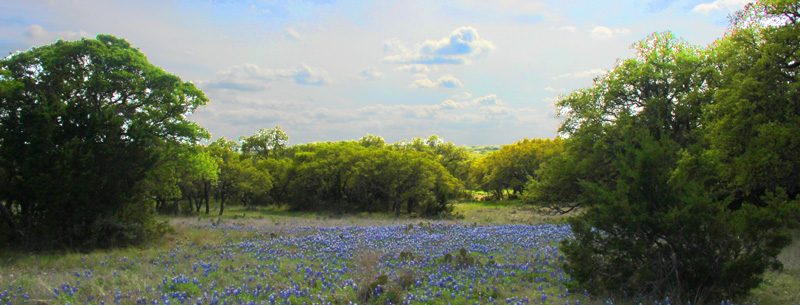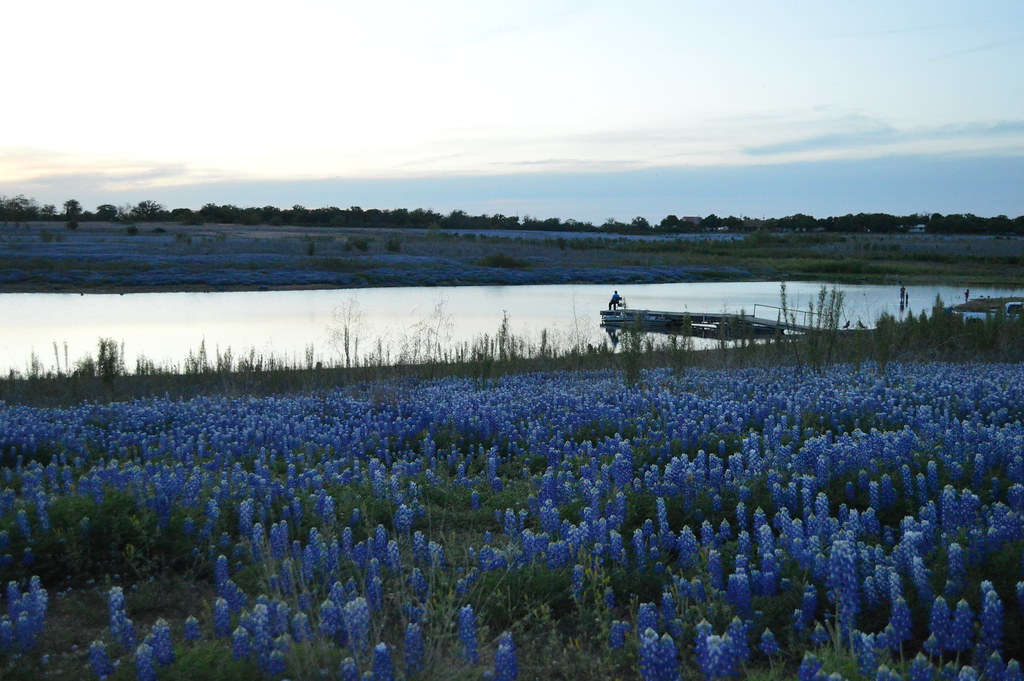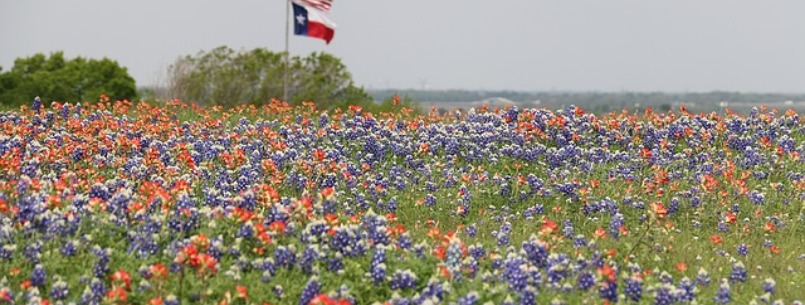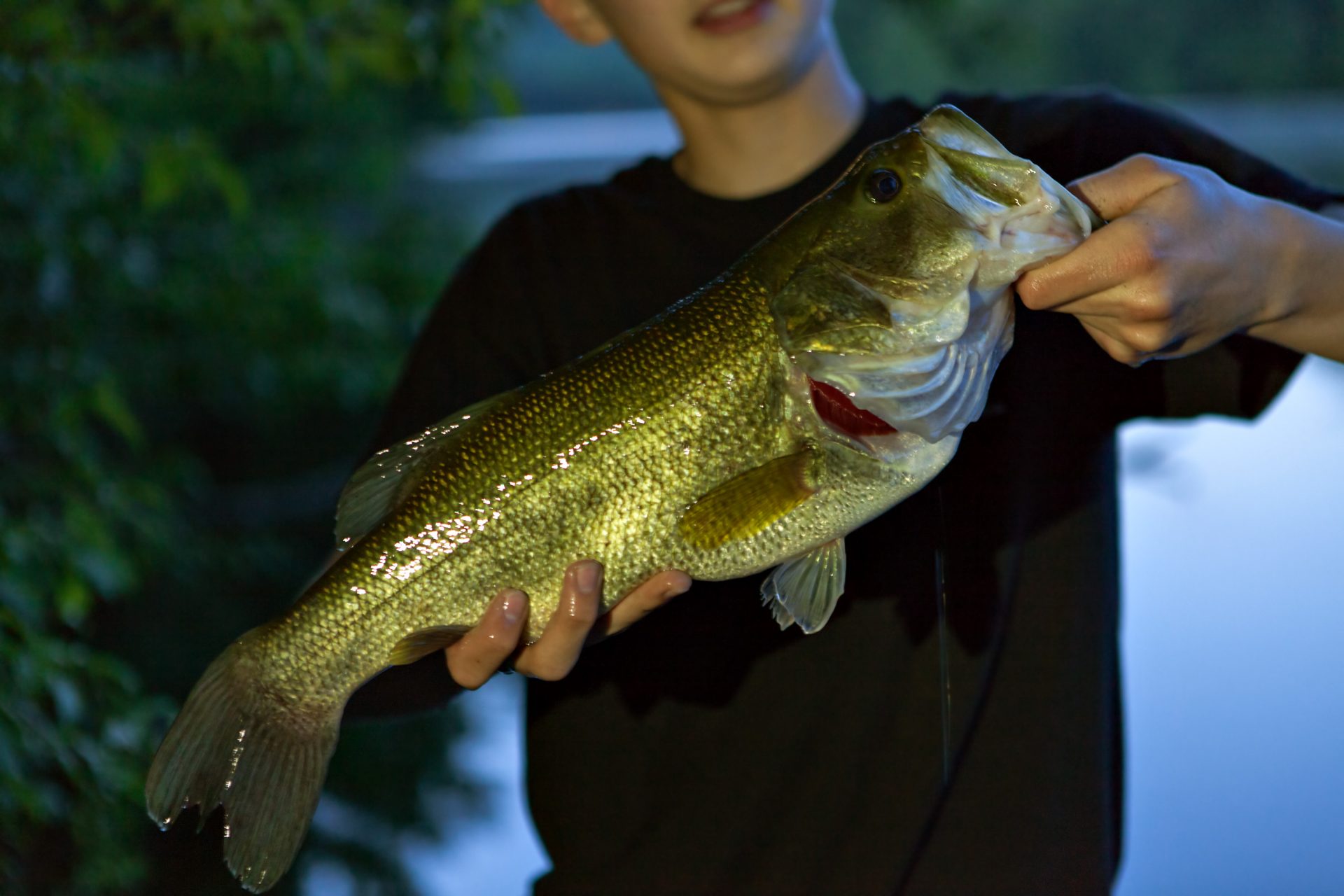With springtime in Austin comes the promise of warmer weather, longer days, and the arrival of beloved bluebonnets. Every year, Texans flock to Central Texas to admire the sight of these iconic wildflowers blanketing the rolling hills and rural landscapes. But for those who take a closer look, there’s more than just bluebonnets in bloom.
As the temperatures begin to rise, nature springs to life with incredible activity. From migratory songbirds returning home to fish stocking local waterways, there’s plenty to explore in Austin this spring season.
Bluebonnet Trails in Austin
Slightly more than a century ago, during the spring of 1886, Mary Taylor Bunton talked her husband into letting her accompany him on a cattle drive from their North Texas ranch along the Chisholm Trail. The young Mrs. Bunton was provided with a buggy, and she followed beside the herd on a hot and often hazardous journey through extremely rugged country. What impressed her most, however, was not the danger but rather the beauty. Specifically, the beauty of wildflowers.
Describing the trip later in her book, A Bride on the Old Chisholm Trail in 1886, she wrote, “Wildflowers grew in the greatest profusion everywhere and there were many rare varieties that I had never seen before. . . . Sometimes I would fill my buggy and decorate my horses’ bridles and harness with the gorgeous blossoms, then I would weave a wreath for my hair and a chaplet of flowers for my shoulders. [. . .] Seated in my flower-bedecked buggy it was easy enough for me to pretend that I was taking part in a grand flower parade.”

Bluebonnets are found in many places besides the open ranchlands. Today, they also grow along hundreds of thousands of miles of Texas roadways, allowing them to be enjoyed by virtually anyone traveling in the state. This is the result of a program that started more than 60 years ago when Jack Gubbels, the first landscape architect for the Texas Highway Department (now the Department of Transportation), developed and implemented a plan for roadside beautification. Not only was Texas the first state in America to plant flowers along its roadways, but the department has also continued the project ever since. Today tons of wildflower seeds are planted along nearly a million miles of Texas highways each year.
In 1965, Congress passed the National Highway Beautification Act, largely through the efforts of Lady Bird Johnson, wife of President Lyndon B. Johnson. Both, of course, were native Texans and used the state as an example of what could be accomplished in other parts of the country.
In 1982, Mrs. Johnson helped establish the National Wildflower Research Center near Austin, and it became so successful that the facility had to move to a new location in 1993. Mrs. Johnson donated the land for the new center as well as helped finance building construction.
Although visual enjoyment is certainly the most obvious benefit of this project, the annual bluebonnet reseeding actually accomplishes several things. The flowers not only help stabilize the soil and replenish nitrogen, they also provide food for a wide variety of wildlife. At the same time, bluebonnets save the Department of Transportation thousands of dollars in mowing and maintenance costs in just a few weeks they are blooming. Although more than 5,000 species of flowering plants are native to Texas, it is likely that at least a few of the flowers Mrs. Bunton enjoyed were bluebonnets, Lupinus texensis. There are actually six different species of bluebonnets in the Lone Star State, and taken collectively they are such a strong part of the Texas heritage they were adopted as the state flower in 1901.

Mrs. Bunton was not the first to describe the beautiful blue flowers. Botanists sent from Spain and England as early as the 1820s to collect plant specimens in the New World were both amazed and awed at the vast fields and meadows of bluebonnets that stretched for miles across the rolling hills.
The very same fields become covered today, beginning in mid to late March and usually peaking during the first two weeks of April. Some have described the scene as a time when the sky falls on Texas, while others liken it to a gently rolling sea of the bluest blue. Whatever the description, to see such huge expanses of wildflowers is an unforgettable experience.
The bluebonnet is a legume, which makes it distantly related in some ways to wisteria, peas, and even clover because it returns nitrogen to the ground. It has five petals, and although its color is primarily blue, some pinkish flowers are occasionally found, as are white albinos. Insects readily feed on the flowers, and deer will eat them when nothing else is available, but cattle won’t touch them.
Hot Spots for Bluebonnets
Although there are many driving routes (known as Bluebonnet trails) throughout the state, a good place to start is near the city of Burnet, which is known as the Bluebonnet Capital of Texas. Burnet is roughly 40 miles northwest of Austin. Follow TX Hwy 29 west out of Burnet for 3-1/2 miles, then turn right (north) on Ranch Road 234 and follow it for about 6 miles. Turn left on Graphite Mine Road, which will eventually meet TX Hwy 29. Turn left to return to Burnet.

A variation of this drive will give you different but equally spectacular views of bluebonnets as well as of Lake Buchanan. Follow TX Hwy 29 West and again turn right on RR 234. If you stay on this road, you’ll have 15 miles of vistas before it finally dead-ends. You can return via the same route or make the turn on Graphite Mine Road.
If you want to see even more of the Hill Country, simply stay on TX Hwy 29 West all the way to Llano, a distance of about 30 miles. In Llano, turn left (south) on TX Hwy 16 and follow it to Fredericksburg (39 miles). In Fredericksburg turn left (east) on U.S. Hwy 290 and follow it 32 miles to Johnson City, then follow U.S. Hwy 281 north 37 miles to Burnet.
Another beautiful bluebonnet drive leads west from Brenham on U.S. Hwy 290 to Giddings (35 miles), south on U.S. Hwy 77 to LaGrange (20 miles), then north on TX 159 and 237, which will get you back to U.S. 290 in the city of Burton, about 15 miles west of Brenham. Brenham lies midway between Austin and Houston.
Each April 24, Texas celebrates State Wildflower Day, and many cities have pageants, parades, and other celebrations. A partial listing of cities includes Mason, Chappell Hill, Keney, Glen Rose, Ennis, and Hughes Springs. The best way to learn what is scheduled is to contact the Lady Bird Johnson Wildflower Center, 4801 La Crosse Avenue, Austin, TX 78739, (512) 292-4100. During March, April, and May, the Department of Transportation also has a telephone hotline with information on where bluebonnets are blooming: (800) 452-9292.
Where Birds Fall from the Sky
Each spring what few trees there are along with the upper Texas coast change color. The color comes not from leaves turning red, gold, and yellow as in the autumn, but from birds. Literally thousands of warblers, orioles, tanagers, grosbeaks, buntings, vireos, and other species give the landscape a spectacular display of living color.
The birds coming to Texas in April and May are known as neotropical, a term describing birds that migrate from their nesting habitat in the United States and Canada to tropical habitats in Mexico and Central and South America rather than stopping along the Gulf Coast for the winter. Included in this huge category are more than 250 species of small songbirds, and they’re the ones that become temporary Texans.
In early March, the birds begin gathering on the Yucatan peninsula in Mexico, resting from flights that may have already brought them a thousand miles. For several weeks they feed heavily to store energy and build up fat reserves since the most demanding part of their northward migration lies ahead more than 600 miles across the Gulf of Mexico.
This is what makes the trees and bushes of the upper Texas coast so important; it is the first landfall the birds have after hours of nonstop flying. Although many continue northward for another hundred miles or so before landing, thousands stop at this first opportunity.
The trip might be as short as 12 hours if the migrants can take advantage of strong southerly winds, but several times each spring the birds run into a huge thunderstorm or an unseasonably fierce north wind that makes the trip 24 to 30 hours. Many migrants perish in the Gulf, but those that do reach Texas drop out of the sky totally exhausted.
This is known as a fallout, and it is one of the most unforgettable spectacles in all of ornithology. One tree may have 15 or more different species of warblers, another will be filled with orange and black orioles, scarlet tanagers, and rose-breasted grosbeaks. Even ruby-throated hummingbirds will be present.
Bird migrations have fascinated humankind for hundreds of years, and the migrations of the neotropical are even more remarkable because of the small size of the birds. They are forced to migrate because winter brings an end to their food supply. Between August and October these same birds, many of them in their immature plumage, gather along the Texas coast before making the southern Gulf crossing. It is their return in the spring, however, when they have their brightly colored adult plumage, that draws the most attention. For many observers, the arrival of the neotropical signals the true beginning of spring and the start of another of nature’s wondrous cycles.
Hot Spots to Watch Birds Migrate in Austin
The most famous spot in Texas to see the spring migration and possible fallout is High Island, where the Houston Audubon Society maintains two superb sanctuaries totaling about 200 acres. To reach the community of High Island, follow I-10 east from Houston 65 miles to Winnie, then turn south on TX Hwy 124 for 20 miles. The first sanctuary, Smith Oaks, is reached by turning east (left) on Winnie Street on the north side of town and following the signs less than a mile.
To reach Boy Scout Woods Sanctuary continue south on 124 turn east (left) on Fifth Street and follow the signs. Both areas have trails and boardwalks that lead through a variety of habitats.
Another spot that attracts migrating neotropicals is Sabine Woods, a 32-acre sanctuary owned by the Texas Ornithological Society and located approximately 30 miles northeast of High Island. Follow TX Hwy 87 south from Port Arthur to Sabine Pass, then follow it southwest for 4 miles. Signs also point the way. More than 30 species of warblers have been identified here during the April migration.
White Bass Spawning Runs
One of the rites of spring in Texas is fishing for the white bass, Morone chrysops. These popular game fish, which seldom weigh more than three or four pounds, make up for their small size with sheer numbers hundreds of thousands of them migrate up rivers and streams between January and May in their annual spawning runs. Along the way, they feed ravenously, so they’re easy to catch, even when fishing from the shore. If you happen to be driving over a bridge and see a lot of cars parked below, you can guess the spawning run is in progress.
White bass, also known as sand bass or Sandies throughout much of the state, are closely related to the larger striped bass. In fact, white bass and stripers have been bred in hatcheries to produce a third fish, the hybrid striper, which has characteristics of both fish. All are silvery white with several dark horizontal lines running from the gills to the tail.

The main characteristic everyone loves about the white bass is that throughout its short life (normally three to four years) it is a very active schooling fish. Where there is one white bass, there may be hundreds more. This is true not only during the migratory spawning runs but also during the rest of the year when the fish are commonly found in the larger lakes.
Beginning as early as December in South Texas but not until March or April farther north, white bass begin staging at the mouths of the rivers and major tributaries that feed into the lakes. Then they start moving upstream in huge concentrations that continue for several weeks.
In virtually every instance the fish get stopped by dams, and when they do, they gather in ever-increasing numbers until the conditions are right for spawning. Unlike the largemouth bass that constructs a nest and then guards both eggs and fry, the female white bass sends her eggs out into the open water.
The eggs are fertilized by the male as they settle. Some attach to rocks and gravel, while current and waves begin washing others downstream. Hatching occurs in two to three days, but overall survival is relatively low. Although as many as a million eggs may be laid, only about 20 to 30 percent will usually survive and grow to adulthood.
A century ago white bass was found only in scattered watersheds across the eastern and midwestern regions of America, but today they have spread throughout most of the nation. In Texas, the fish were native only to Caddo Lake, but in 1932 biologists took 13 brood fish from Caddo to Lake Lewisville north of Dallas, and now white bass swim in river systems across the state.
The young fry grows rapidly as they feed on zooplankton and other microscopic organisms. Soon their diet begins to include tiny insects and eventually other small fish. In some Texas lakes,”sand bass” grow as much as 11 inches in their first year.
White bass fishing usually involves lighter spinning and bait-casting tackle, since the average size of the fish caught is about two pounds. Small 1/8-ounce hair and plastic jigs in white, yellow, and chartreuse are popular lures, as are small silver spoons. At times, small topwater popping lures can also be used.
The limit in Texas is 25 white bass per day, 10-inch minimum size. Some lakes have a 12-inch minimum size limit.
Hot Spots for Texas Bass Fishing
The Colorado River is one of the state’s white bass hotspots, with some of the best fishing taking place at Colorado Bend State Park. To reach the park, travel to the small town of Bend, approximately 20 miles southeast of San Saba on FM 580. San Saba lies about 80 miles northwest as the crow flies Austin and 90 miles southwest of Waco. In Bend follow the signs to the park entrance, located 6 miles south on a gravel road. Many anglers fish from the bank at the campground, while others wade or use float tubes. You can also launch a small boat at the park and fish the 10 miles down Colorado to Lake Buchanan.

In North Texas, excellent fishing is available on the Clear Fork of the Brazos River southwest of Benbrook on U.S. Hwy 377. Benbrook is a suburb of Fort Worth, on the city’s southwest edge. Follow 377 from Benbrook, and just before entering the small community of Wheatland you’ll cross the river. Park on the left; well-worn trails lead downstream to favorite fishing spots.
Still, another favorite fishing area is where I-45 crosses Chambers Creek in Navarro County between the cities of Ennis and Corsicana. Ennis is about 25 miles south of Dallas, and Corsicanna another 25 miles further on. Bank fishing is popular, and you’ll usually see several cars parked here during the spring run.
Thousands of white bass are also caught annually in the Trinity River north of Lake Livingston. The favorite gathering spot is where TX Hwy 7 crosses the Trinity River about 15 miles west of the city of Crockett. Crockett is about 100 miles east of Waco, and just west of Davy Crockett National Forest. Like the other bridge crossings, there is plenty of parking here on either side of the road.